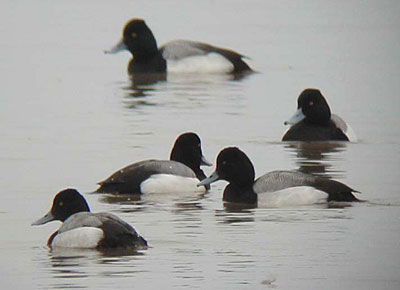We sometimes think of the Boreal as a vast forest and, in part, it is. But the Boreal also contains vast wetlands - over a million lakes, rivers, streams, ponds, and bogs. The Boreal is home to Canada's longest river, the Mackenzie, that drains a watershed covering 20% of the country. The Boreal also contains North America's fourth largest lake--Great Bear Lake.

Photo Jeff Wells |
This huge complex of wetlands provides essential breeding and stop-over habitat for much of North America's waterfowl population. About 80% of all North American waterfowl species breed in the Boreal. Fifteen species are estimated to rely on Boreal wetlands habitats to support at least 50% of their North American population while another seven species have 25-50% of their populations nesting in the Boreal.
With facts like these, you can see why the National Wildlife Federation's newly released report "The Waterfowler's Guide to Global Warming" caught my attention. The report details the many ways that global warming pollution is impacting waterfowl populations and the likely effects in coming years. Unfortunately, northern areas like the Boreal are among the areas of the world experiencing the fastest rise in temperatures. Many parts of the western Boreal region are drying out and species like scoters and scaup may be paying the price.
To learn more about the issue of global warming and waterfowl go to http://www.nwf.org/globalwarming/ducks.cfm.
You can download the report (and I recommend it to anyone interested in birds and waterfowl in particular) at
http://www.nwf.org/globalwarming/pdfs/waterfowlbook.pdf.
Jeff Wells
Senior Scientist
Boreal Songbird Initiative

